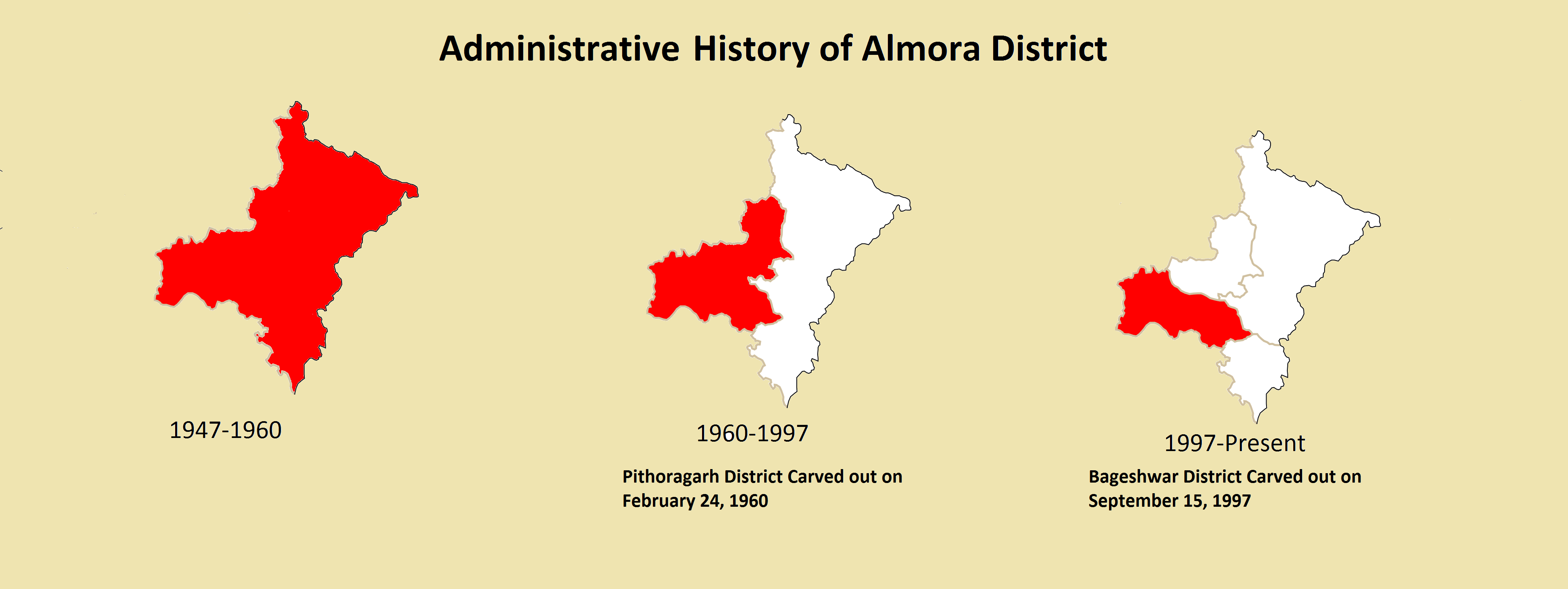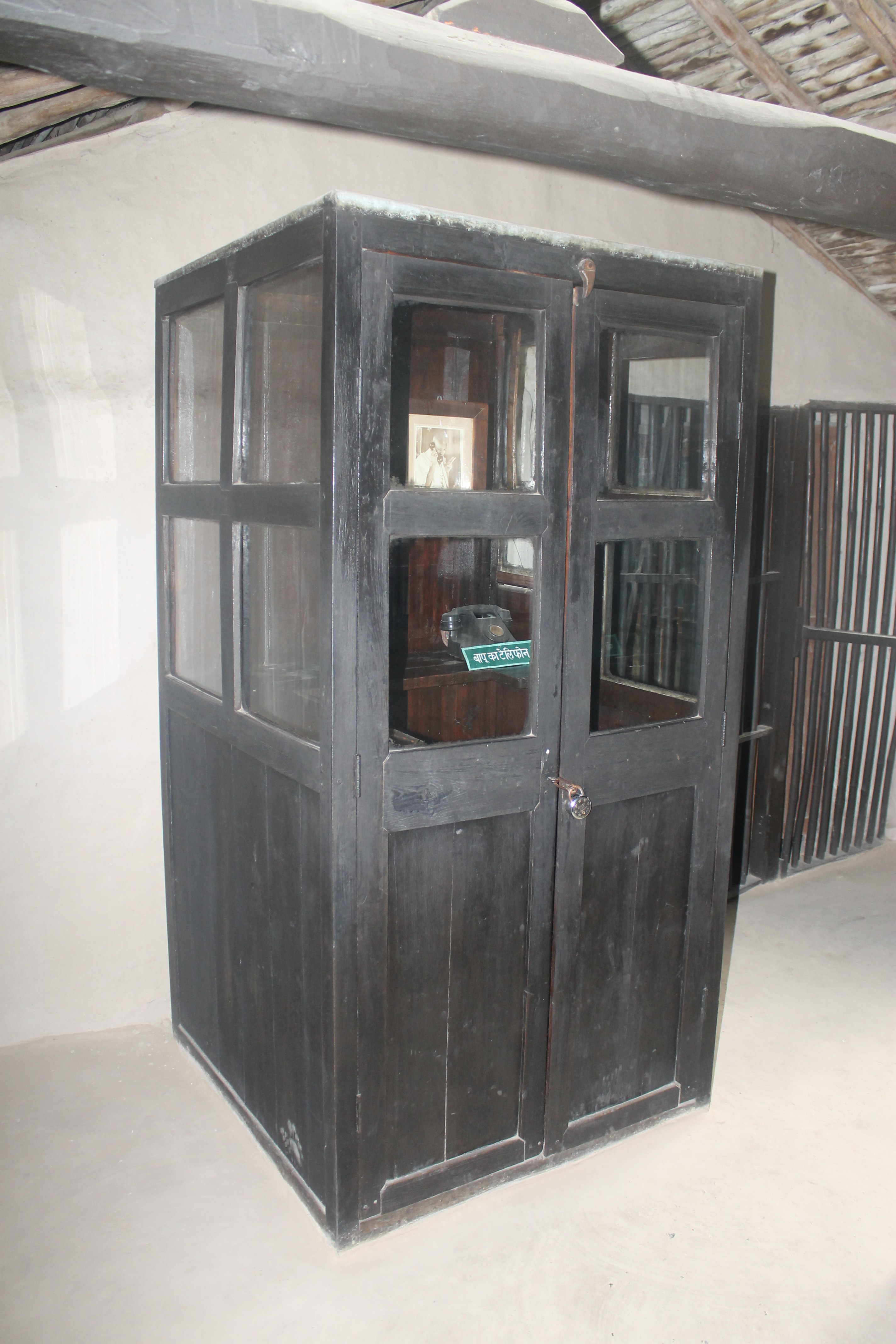|
Sarla Behn
Sarala Behn (born Catherine Mary Heilman; 5 April 19018 July 1982) was an English Gandhian social activist whose work in the Kumaon region of India helped create awareness about the environmental destruction in the Himalayan forests of the state. She played a key role in the evolution of the Chipko Movement and influenced a number of Gandhian environmentalists in India including Chandi Prasad Bhatt, Bimala behn and Sunderlal Bahuguna. Along with Mirabehn, she is known as one of Mahatma Gandhi's two English daughters. The two women's work in Garhwal and Kumaon, respectively, played a key role in bringing focus on issues of environmental degradation and conservation in independent India. Early life Sarla Behn, was born Catherine Mary Heilman in the Shepherd's Bush region of west London in 1901 to a father of German Swiss extraction and an English mother. Due to his background, her father was interned during the First World War and Catherine herself suffered ostracism and w ... [...More Info...] [...Related Items...] OR: [Wikipedia] [Google] [Baidu] |
Shepherd's Bush
Shepherd's Bush is a district of West London, England, within the London Borough of Hammersmith and Fulham west of Charing Cross, and identified as a major metropolitan centre in the London Plan. Although primarily residential in character, its focus is the shopping area of Shepherd's Bush Green, with the Westfield London shopping centre a short distance to the north. The main thoroughfares are Uxbridge Road, Goldhawk Road and Askew Road, all with small and mostly independent shops, pubs and restaurants. The Loftus Road football stadium in Shepherd's Bush is home to Queens Park Rangers. In 2011, the population of the area was 39,724. The district is bounded by Hammersmith to the south, Holland Park and Notting Hill to the east, Harlesden and Kensal Green to the north and by Acton and Chiswick to the west. White City forms the northern part of Shepherd's Bush. Shepherd's Bush comprises the Shepherd's Bush Green, Askew, College Park & Old Oak, and Wormholt and White City wards ... [...More Info...] [...Related Items...] OR: [Wikipedia] [Google] [Baidu] |
Independent India
Independent or Independents may refer to: Arts, entertainment, and media Artist groups * Independents (artist group), a group of modernist painters based in the New Hope, Pennsylvania, area of the United States during the early 1930s * Independents (Oporto artist group), a Portuguese artist group historically linked to abstract art and to Fernando Lanhas, the central figure of Portuguese abstractionism Music Groups, labels, and genres * Independent music, a number of genres associated with independent labels * Independent record label, a record label not associated with a major label * Independent Albums, American albums chart Albums * ''Independent'' (Ai album), 2012 * ''Independent'' (Faze album), 2006 * ''Independent'' (Sacred Reich album), 1993 Songs * "Independent" (song), a 2007 song by Webbie * "Independent", a 2002 song by Ayumi Hamasaki from '' H'' News and media organizations * ''The Independent'', a British online newspaper. * ''The Malta Independent'', a Maltese ... [...More Info...] [...Related Items...] OR: [Wikipedia] [Google] [Baidu] |
Almora District
Almora is a District (India), district in the Kumaon Division of Uttarakhand state, India. The headquarters is at Almora. It is 1,638 meters above sea level. The neighbouring regions are Pithoragarh district to the east, Chamoli district to the west, Bageshwar district to the north and Nainital district to the south. History The ancient town of Almora was capital of the Kumaon Kingdom, before its establishment, it was under the possession of Katyuri Kings, Katyuri king Baichaldeo. Later on when the Chand dynasty was founded in Champawat, the town of Almora was founded at this centrally located place in 1568 by Kalyan Chand. Later Chand kings shifted the capital of the Kumaon Kingdom from Champawat to Almora. Almora town was the administrative headquarter of the Kumaun district; that was formed in 1815 following the defeat of Gorkha army in the Anglo-Gorkha war and the 1816 Treaty of Sugauli. The Kumaun district then consisted of the complete Kumaon Division excluding the Udham ... [...More Info...] [...Related Items...] OR: [Wikipedia] [Google] [Baidu] |
Kausani
Kausani ( Kumaoni: ''Kôsānī'') is a hill station and Village situated in Bageshwar district in the state of Uttarakhand, India. It is famous for its scenic splendour and its spectacular 300 km-wide panoramic view of Himalayan peaks like Trisul, Nanda Devi and Panchchuli. Mahatma Gandhi called this place the 'Switzerland of India', due to similarity in landscapes. History During Independence of India in 1947, Kausani was situated in the Almora District till 15 September 1997 after which Bageshwar district was carved out of Almora district. On 9 November 2000, the State of Uttarakhand was created from the Himalayan and adjoining northwestern districts of Uttar Pradesh. Geography Kausani is located at in Bageshwar district of Uttarakhand, India at a distance of from Bageshwar city, the administrative Headquarter of Bageshwar District. Kausani is located north of Almora, a major hill station and the historical capital of Kumaon Kingdom. Kausani lies in the Kumaon divisi ... [...More Info...] [...Related Items...] OR: [Wikipedia] [Google] [Baidu] |
Malaria
Malaria is a mosquito-borne infectious disease that affects humans and other animals. Malaria causes symptoms that typically include fever, tiredness, vomiting, and headaches. In severe cases, it can cause jaundice, seizures, coma, or death. Symptoms usually begin ten to fifteen days after being bitten by an infected mosquito. If not properly treated, people may have recurrences of the disease months later. In those who have recently survived an infection, reinfection usually causes milder symptoms. This partial resistance disappears over months to years if the person has no continuing exposure to malaria. Malaria is caused by single-celled microorganisms of the ''Plasmodium'' group. It is spread exclusively through bites of infected ''Anopheles'' mosquitoes. The mosquito bite introduces the parasites from the mosquito's saliva into a person's blood. The parasites travel to the liver where they mature and reproduce. Five species of ''Plasmodium'' can infect and be spread by h ... [...More Info...] [...Related Items...] OR: [Wikipedia] [Google] [Baidu] |
Nai Talim
Nai Talim, or Basic Education, is a principle which states that knowledge and work are not separate. Mahatma Gandhi promoted an educational curriculum with the same name based on this pedagogical principle. It can be translated with the phrase 'Basic Education for all'. However, the concept has several layers of meaning. It developed out of Gandhi's experience with the English educational system and with colonialism in general. In that system, he saw that Indian children would be alienated and 'career-based thinking' would become dominant. In addition, it embodied a series of negative outcomes: the disdain for manual work, the development of a new elite class, and the increasing problems of industrialization and urbanization. The three pillars of Gandhi's pedagogy were its focus on the ''lifelong character'' of education, its ''social character'' and its form as a ''holistic process''. For Gandhi, education is 'the moral development of the person', a process that is by definiti ... [...More Info...] [...Related Items...] OR: [Wikipedia] [Google] [Baidu] |
Wardha
Wardha is a city and a municipal council in Wardha district in the Indian state of Maharashtra. It is the administrative headquarters of Wardha district. Wardha gets its name from the Wardha River which flows at the north, west and south boundaries of the district. Founded in 1866, the town is now an important centre for the cotton trade. It was an important part of the Gandhian era. It has various parks and playgrounds. History Wardha was included in the empire of the Mauryas, Shungas, Satavahanas and Vakatakas. Pravarapura, modern Pavnar, was once the capital of the Vakataka dynasty. Vakatakas were contemporaries of the Imperial Guptas. Prabhavatigupta, the daughter of Chandragupta II (Vikramaditya), was married to the Vakataka ruler Rudrasena. The period of the Vakatakas was from the 2nd to the 5th century CE. The empire stretched from the Arabian Sea in the west to the Bay of Bengal in the east, and from the Narmada River in the north to the Krishna-Godavari delta in the ... [...More Info...] [...Related Items...] OR: [Wikipedia] [Google] [Baidu] |
Sevagram
Sevagram (meaning "A town for/of service") is a town in the state of Maharashtra, India. It was the place of Mahatma Gandhi's ashram and his residence from 1936 to his death in 1948. After Sabarmati, Sevagram Ashram holds immense importance due to the residence of Mahatma Gandhi. Overview Sevagram, originally Segaon, is a small village, located about 8 km from Wardha. Gandhi set up what eventually became an ashram in the outskirts of the village. Seth Jamnalal Bajaj of Wardha, a disciple of Gandhi, made available to the ashram about 300 acres (1.2 km2) of land. Near the ashram there is a museum where artifacts of India's freedom struggle are preserved. History When Gandhi started his padayatra (foot march) in 1930 from Sabarmati Ashram to Ahmedabad for the Salt Satyagraha, he decided not to return to Sabarmati till India achieved independence. Gandhi was imprisoned for more than two years. On his release he spent sometime travelling around India. He decided to ... [...More Info...] [...Related Items...] OR: [Wikipedia] [Google] [Baidu] |
Ashram
An ashram ( sa, आश्रम, ) is a spiritual hermitage or a monastery A monastery is a building or complex of buildings comprising the domestic quarters and workplaces of monastics, monks or nuns, whether living in communities or alone (hermits). A monastery generally includes a place reserved for prayer which ... in Indian religions. Etymology The Sanskrit noun is a thematic nominal derivative from the root 'toil' (< Proto-Indo-European, PIE *''ḱremh2'') with the prefix 'towards.' An ashram is a place where one strives towards a goal in a disciplined manner. Such a goal could be ascetic, spirituality, spiritual, yogic or any other. Overview  An ashram wo ...
An ashram wo ...
[...More Info...] [...Related Items...] OR: [Wikipedia] [Google] [Baidu] |
Udaipur
Udaipur () (ISO 15919: ''Udayapura''), historically named as Udayapura, is a city and municipal corporation in Udaipur district of the state of Rajasthan, India. It is the administrative headquarter of Udaipur district. It is the historic capital of the kingdom of Mewar in the former Rajputana Agency. It was founded in 1559 by Udai Singh II of the Sisodia clan of Rajput, when he shifted his capital from the city of Chittorgarh to Udaipur after Chittorgarh was besieged by Akbar. It remained as the capital city till 1818 when it became a British princely state, and thereafter the Mewar province became a part of Rajasthan when India gained independence in 1947. The city is located in the southernmost part of Rajasthan, near the Gujarat border. It is surrounded by the Aravali Range, which separates it from the Thar Desert. It is placed almost in the middle of two major Indian metro cities, around 660 km from Delhi and 800 km from Mumbai. Besides, connectivity with Gujar ... [...More Info...] [...Related Items...] OR: [Wikipedia] [Google] [Baidu] |
Indian Freedom Struggle
The Indian independence movement was a series of historic events with the ultimate aim of ending British rule in India. It lasted from 1857 to 1947. The first nationalistic revolutionary movement for Indian independence emerged from Bengal. It later took root in the newly formed Indian National Congress with prominent moderate leaders seeking the right to appear for Indian Civil Service examinations in British India, as well as more economic rights for natives. The first half of the 20th century saw a more radical approach towards self-rule by the Lal Bal Pal triumvirate, Aurobindo Ghosh and V. O. Chidambaram Pillai. The final stages of the independence struggle from the 1920s was characterized by Congress' adoption of Mahatma Gandhi's policy of non-violence and civil disobedience. Intellectuals such as Rabindranath Tagore, Subramania Bharati, and Bankim Chandra Chattopadhyay spread patriotic awareness. Female leaders like Sarojini Naidu, Pritilata Waddedar, and Kasturba ... [...More Info...] [...Related Items...] OR: [Wikipedia] [Google] [Baidu] |







